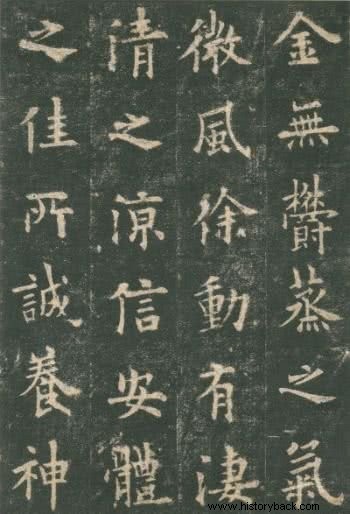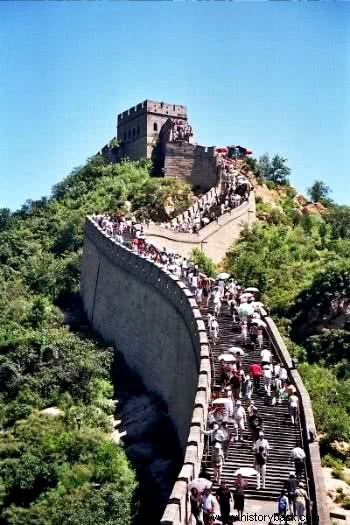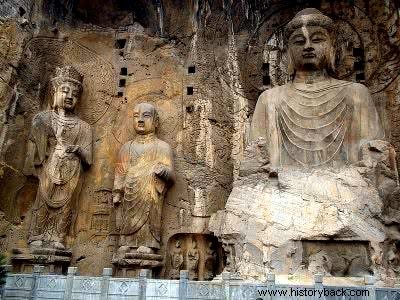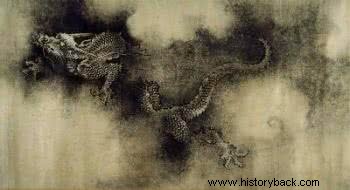China is among the four oldest civilizations in the world, along with Egypt , India and Babylon . In the country of continental dimensions, writing alone is more than 3,600 years old.
The wealth of ancient Chinese information travels through art, calligraphy, cuisine, dance, music, literature, martial arts, medicine, religion, astrology, architecture and behavior.
Language
Chinese is a language family of immense diversity and complexity. Chinese dialects stem from the Sino-Tibetan language, but they are entirely different from each other. The official language of China is Mandarin.
The Chinese language is tonal, so words are distinguished by sound and intonation, which can go up or down.
Writing and Calligraphy
Calligraphy is among the traditional Chinese arts and began in the Shang dynasty, 3,600 years ago. It is an ancient tradition, which has directly influenced neighboring countries. It is divided into five categories, stamp, official, formal, running and cursive. Each of the styles reflects a Chinese historical and political moment.
 Chinese pictograms represent concepts
Chinese pictograms represent concepts
The calligraphic base is set in the refined pictograms and ideograms, with at least 60 thousand characters that are still used today. Writing the characters is considered a work of art that requires mental discipline and concentration. The pictograms stem from different origins and dynasties.
Unlike the alphabets used in the West, pictograms represent concepts and not sounds.
Also read:History of Writing.
Cooking
Cuisine is among the most diverse spots in China. The typical dishes bring together the most varied ingredients and can be considered exotic for Westerners. The Chinese, however, adapted the palate to the need for food and variety.
Each dish reflects what is available in agricultural products in most geographic areas. For example, in the north of the country, the main ingredient is wheat and in the south, rice. In addition to the products, the way of seasoning and cooking the food is also different.
There are at least eight distinctive styles of cuisine in China, representing 22 provinces.
Architecture
Ancient Chinese architecture is marked by magnificent temples. They are palaces that add artificial lakes, like those found in the Imperial City or Forbidden City. The construction, begun in 1406, is marked by imposing terraces, pavilions and gardens.
The climate directly influences Chinese architecture, which has sleeping platforms called kang to the north. In Mongolia, the inhabitants live in yurts, typical huts. And to the south are stilts.
Traditional houses are rectangular and display the roofs with the corners sloping upwards, typically Chinese.
Chinese Great Wall
The Great Wall of China is one of the most impressive examples of Chinese architecture. It is considered a feat and is more than 2,300 years old. Located in northern China, it has 21,100 kilometers spread between valleys and mountains, and can be seen from the moon.
 The Great Wall is highlighted in imposing Chinese architecture
The Great Wall is highlighted in imposing Chinese architecture
The construction of the Great Wall took place over the course of four dynasties:Zhou (770 to 221 BC), Qin (221 to 2.7 BC), Han (206 BC to 220 AD) and Ming (1368 to 1644). The purpose of the construction was to protect the silk trade and prevent invasions.
Chinese Society
Chinese society lived under the caste system, supported by Confucianism until the communists took power. In control, the Communist Party annulled the traditional hierarchy and determined the end of classes, which, although prohibited, is lived ideologically by the Chinese.
The Chinese caste system places scholars at the top of the system. Farmers, artisans, traders and soldiers come later. In an attempt to impose social mobility, families invested in the education of the oldest child.
Until the 1980s, different classes used the color of clothing as identification, with the poorest having darker tones.
Woman
The role of women was restricted to the domestic sphere until the communist revolution in China. Men were allowed to participate in all the intricacies of the sphere of society and, in addition to domestic life, women could only work in agriculture.
The social difference between men and women was also supported by the Confucians who saw it as a property, first of the fathers and later of the husbands. Women were also required to make excruciating physical sacrifices to keep themselves beautiful.
Among the most widespread was the practice of tying the feet to prevent their growth. Bound by strong bandages and sometimes broken, the feet did not grow, which could impose dwarfism and difficulties in walking on the woman. The method was banned in 1901.
Although condemned and prohibited by law, the sale of women and girls as brides in arranged marriages is still common.
Customs
Obedience and deference to the hierarchy is among the strictest customs in Chinese society. The order is to place the oldest men first, then the youngest men, then the oldest women, followed by the youngest women.
Social interaction is governed by Confucianism, which provides for honor, dignity, loyalty and respect for antiquity.
Touching is allowed between people of the same sex, but not tolerated between individuals of the opposite sex. It is common to offer gifts on the occasion of the Chinese New Year, birthdays, weddings and births.
There are gifts, however, that are not well accepted because they can represent bad luck or death. Among them are scarves, sandals, flowers, watches, scissors and knives. A gift can be refused up to three times before being accepted. When giving gifts, it is important to do so with both hands.
Religion
China is an atheist country, considering it is a communist state. Taoism and Confucianism, the traditional religions, however, are professed by 20% of the population.
Confucius' teachings, extremely pragmatic, emphasize responsibility for the common good, obedience and deference to elders.
Taoism, founded by Lao Tse Tung, is mystical and focuses on the ideals of balance and order with nature. Taoists repudiate aggression, competition and ambition.
 Buddhist temple in Logmen, Henan Province
Buddhist temple in Logmen, Henan Province
Buddhism, which came out of India, is also practiced in China and resembles Taoism. Its goal is extreme spiritual purity, nirvana, the transcending of limits of mind and body. Part of the population shares minority religions, they have their own gods.
Arts
Literature
Chinese poetry is considered a linguistic and visual spectacle. Classical poems express balance in rhyme, tone and graphic disposition. Poetry has marked China since 600 BC. Prose is the most popular literary tradition and began to be developed in the Ming dynasty.
From the 19th century onwards, Western influence is marked, but during the communist revolution, literature came to be seen as a tool for promoting party ideology.
Graphic Arts
Nature is among the main themes of classical Chinese painters. The attempt is to represent balance through yin (feminine) and yang (masculine). In this field, painting also represents a marriage with the art of calligraphy, considered a maximum expression of character.
The graphic is also found on bronze vases used as funerary urns and in extreme color embroidery.
Music
The scale of Chinese music differs from that used in the West, which has eight tones. The Chinese woman has five and there is no harmony. Traditional instruments are the two-stringed violin, three-stringed flute, vertical flute, horizontal flute and gongs.
Opera is also among the most traditional manifestations of Chinese art. There are at least 300 different ways to present it, with performances that involve acrobatics and exquisite makeup.
Current Chinese Culture
Traditional manifestations of Chinese culture, ranging from language to cuisine, resist, but adapt to Western pressure after the economic opening to the West allowed by the Communist Party.
In the arts, the departure of artists is censored and the production of works that criticize the regime is prohibited. The Chinese government, however, sponsors artistic manifestations through project financing.
Chinese Dragon
One of the main symbols of China is the dragon, a figure composed of a tiger's body, goat's beard, carp fins and snake belly. Legend says it is capable of breathing fire, summoning wind, summoning rain and flying. It can be as big as the sky or as small as the head of a pin.
It has been the symbol of Chinese culture since ancient times. It represents grandeur, courage and vigor.
 Chinese dragon represented by Chen Rong in 1244
Chinese dragon represented by Chen Rong in 1244
General data, flag, cities, economic aspects and history. Learn everything in China.
To learn more about the great Asian country, be sure to consult :
- Chinese Revolution
- Chinese Cultural Revolution
- Mao Zedong
